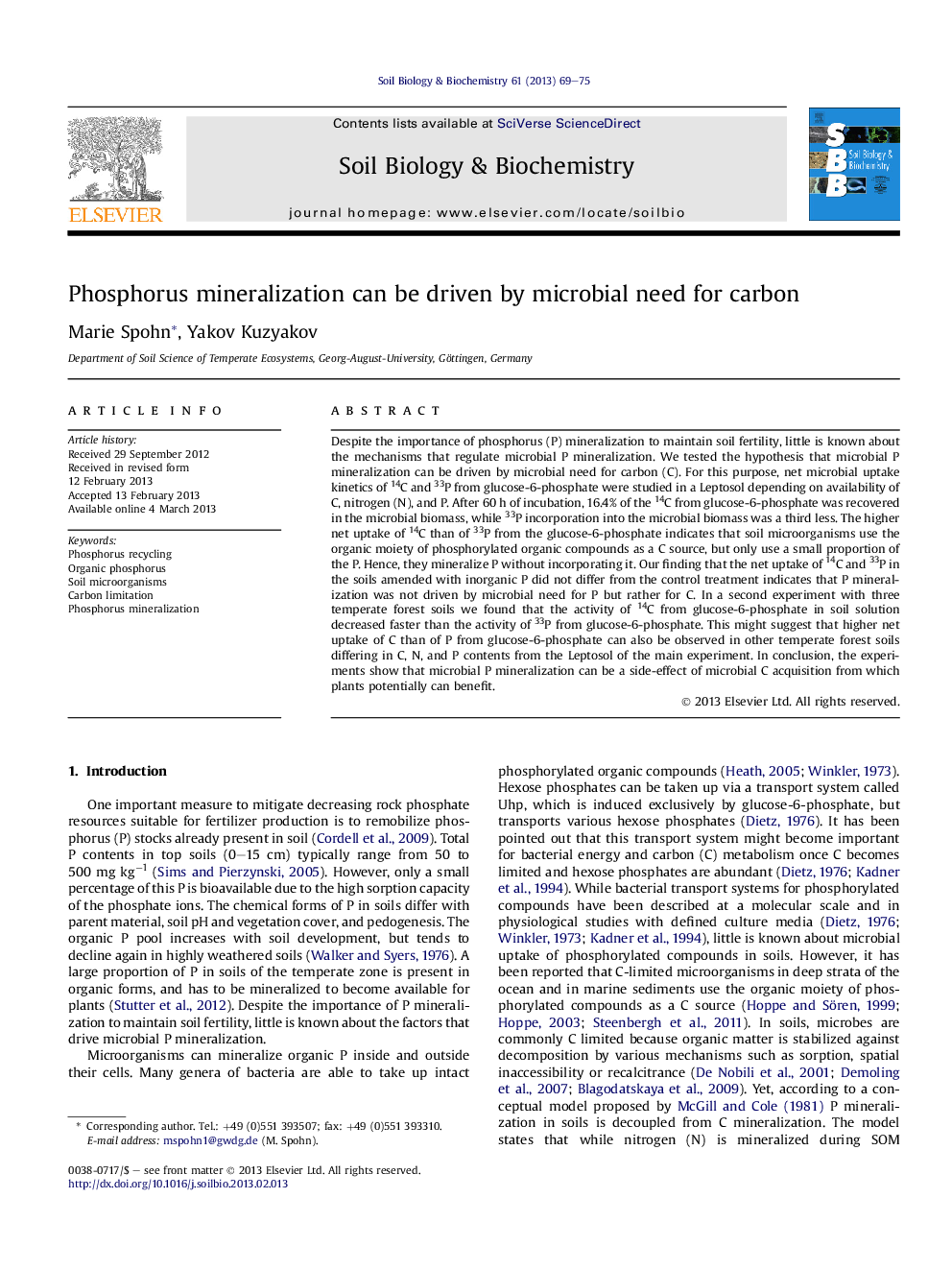| Article ID | Journal | Published Year | Pages | File Type |
|---|---|---|---|---|
| 2024791 | Soil Biology and Biochemistry | 2013 | 7 Pages |
Despite the importance of phosphorus (P) mineralization to maintain soil fertility, little is known about the mechanisms that regulate microbial P mineralization. We tested the hypothesis that microbial P mineralization can be driven by microbial need for carbon (C). For this purpose, net microbial uptake kinetics of 14C and 33P from glucose-6-phosphate were studied in a Leptosol depending on availability of C, nitrogen (N), and P. After 60 h of incubation, 16.4% of the 14C from glucose-6-phosphate was recovered in the microbial biomass, while 33P incorporation into the microbial biomass was a third less. The higher net uptake of 14C than of 33P from the glucose-6-phosphate indicates that soil microorganisms use the organic moiety of phosphorylated organic compounds as a C source, but only use a small proportion of the P. Hence, they mineralize P without incorporating it. Our finding that the net uptake of 14C and 33P in the soils amended with inorganic P did not differ from the control treatment indicates that P mineralization was not driven by microbial need for P but rather for C. In a second experiment with three temperate forest soils we found that the activity of 14C from glucose-6-phosphate in soil solution decreased faster than the activity of 33P from glucose-6-phosphate. This might suggest that higher net uptake of C than of P from glucose-6-phosphate can also be observed in other temperate forest soils differing in C, N, and P contents from the Leptosol of the main experiment. In conclusion, the experiments show that microbial P mineralization can be a side-effect of microbial C acquisition from which plants potentially can benefit.
► Microbial uptake of 14C and 33P from glucose-6-phosphate in soil was studied. ► After 60 h, 16.4% of the 14C, but only 5.6% of the 33P were recovered in microbial biomass. ► After 10 d, 33P recovery in the microbial biomass increased only up to 13.8%. ► Microbial uptake of 33P and 14C from glucose-6-phosphate was independent of P availability. ► We conclude that P mineralization can be driven by microbial need for C.
